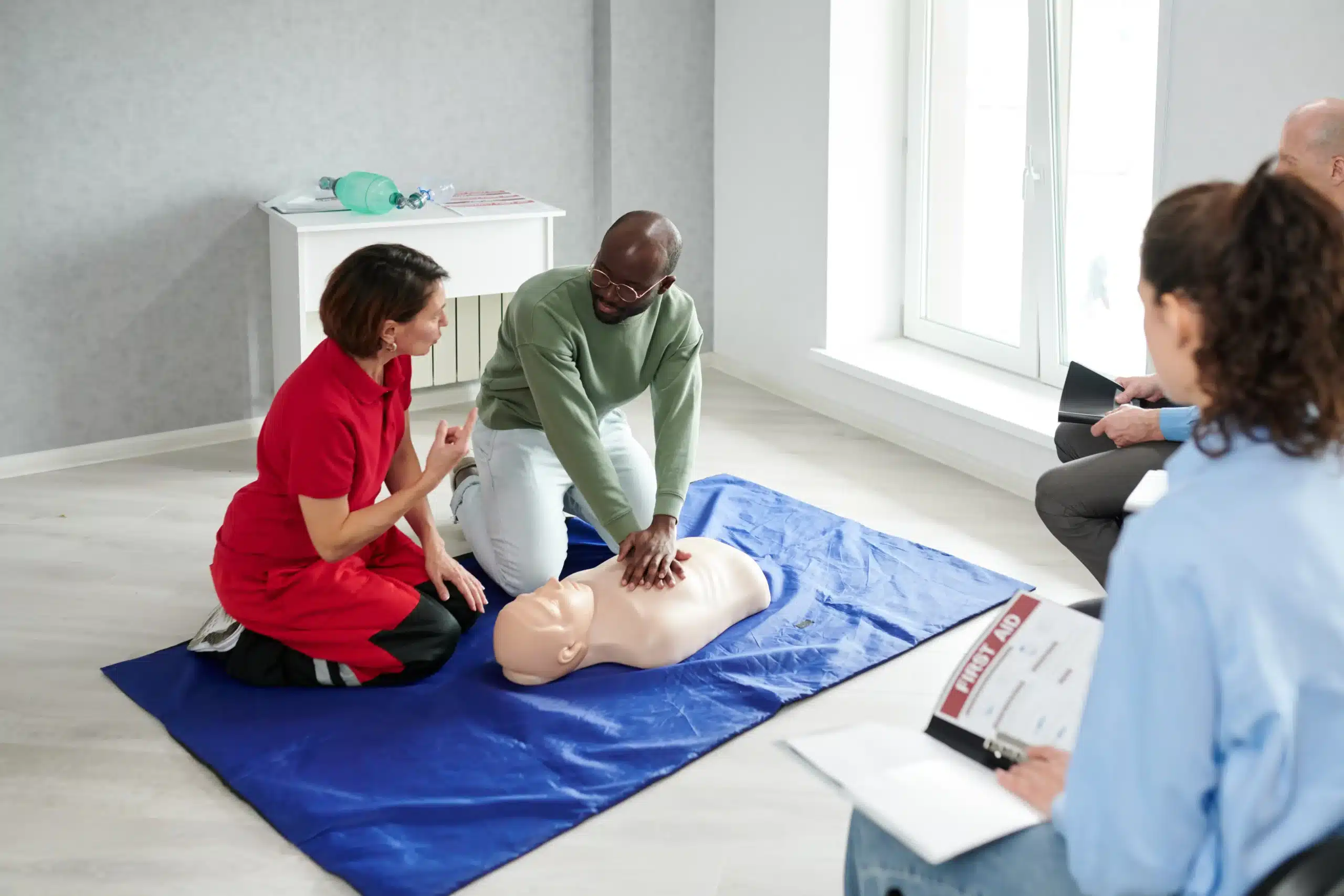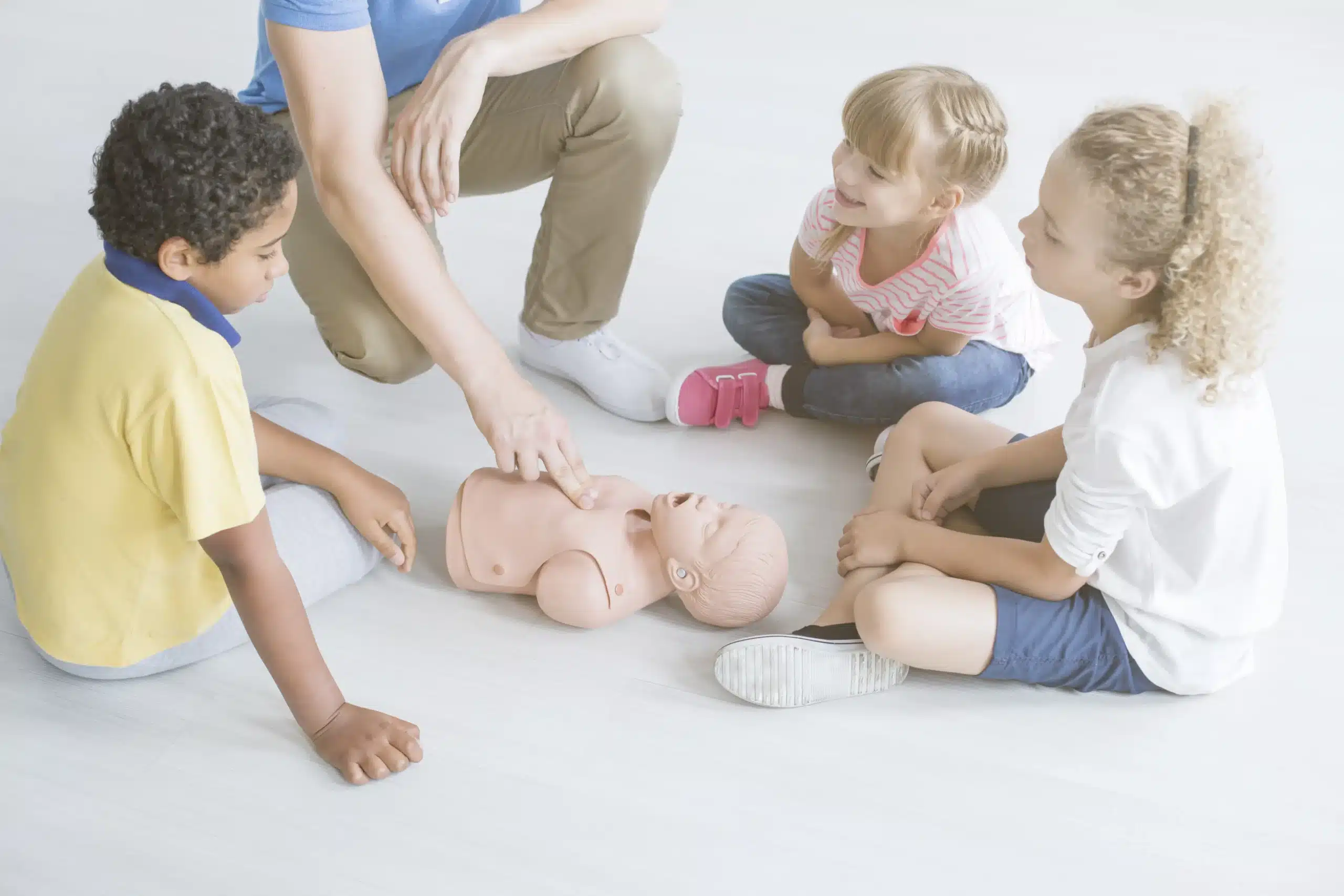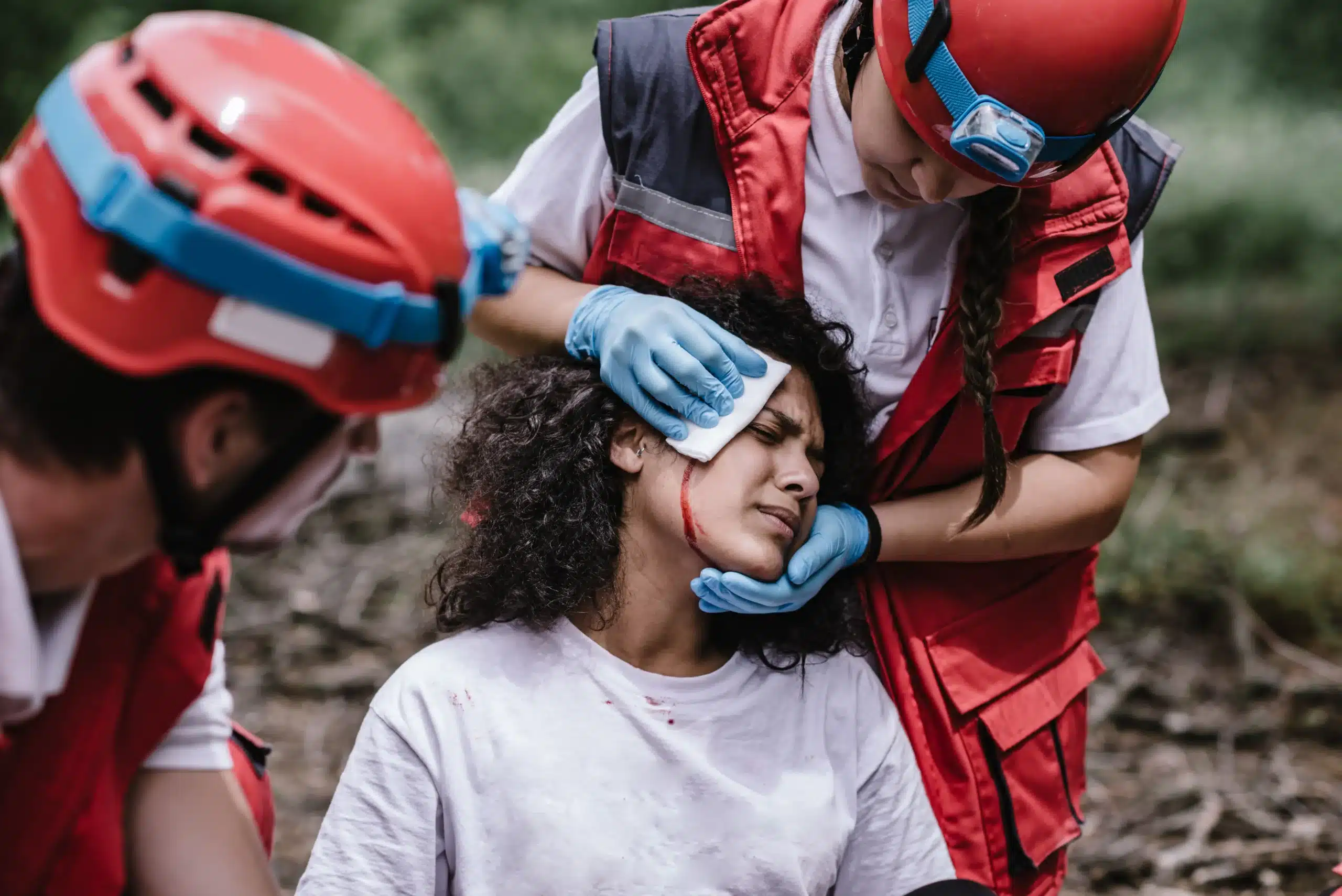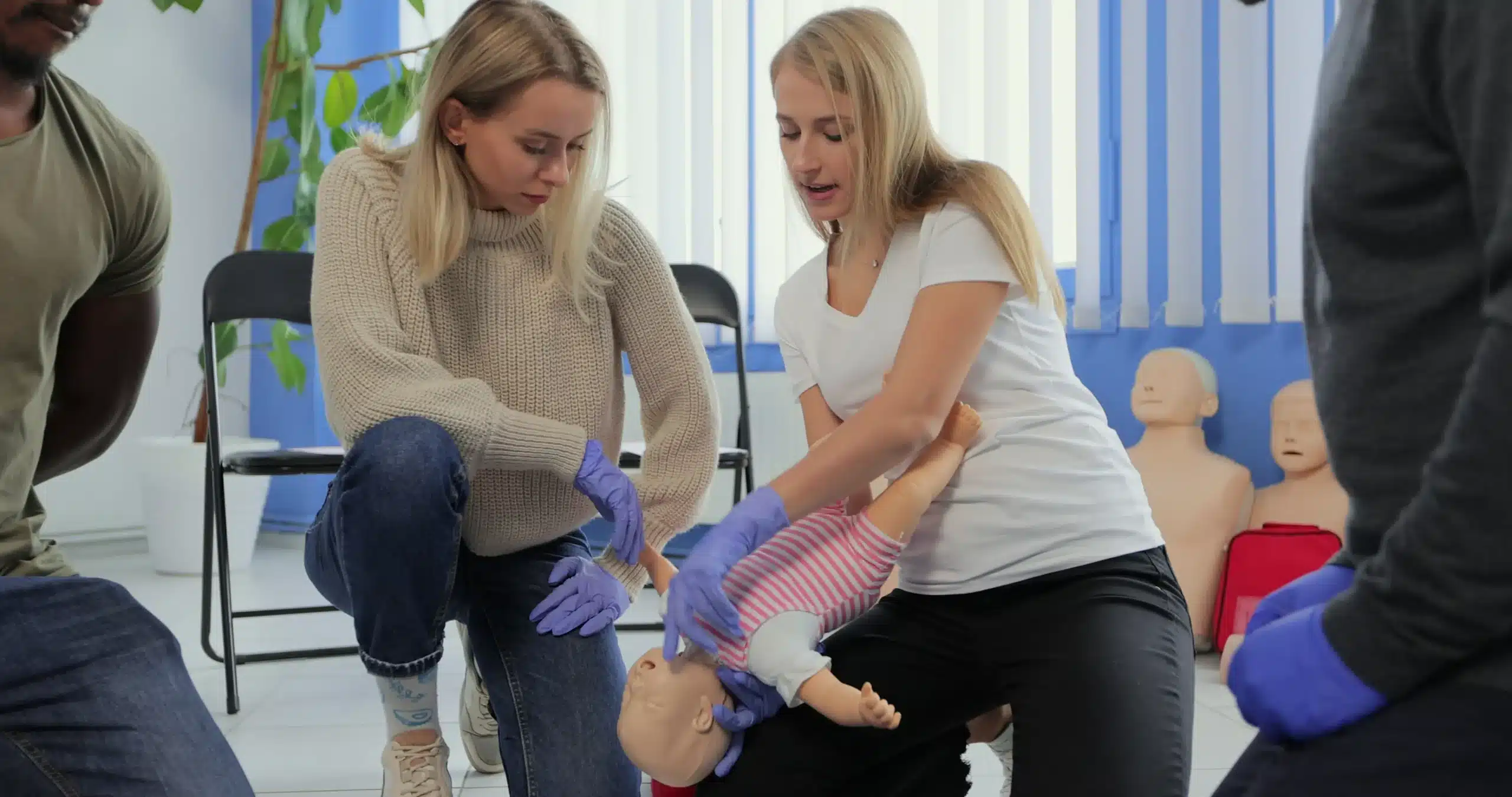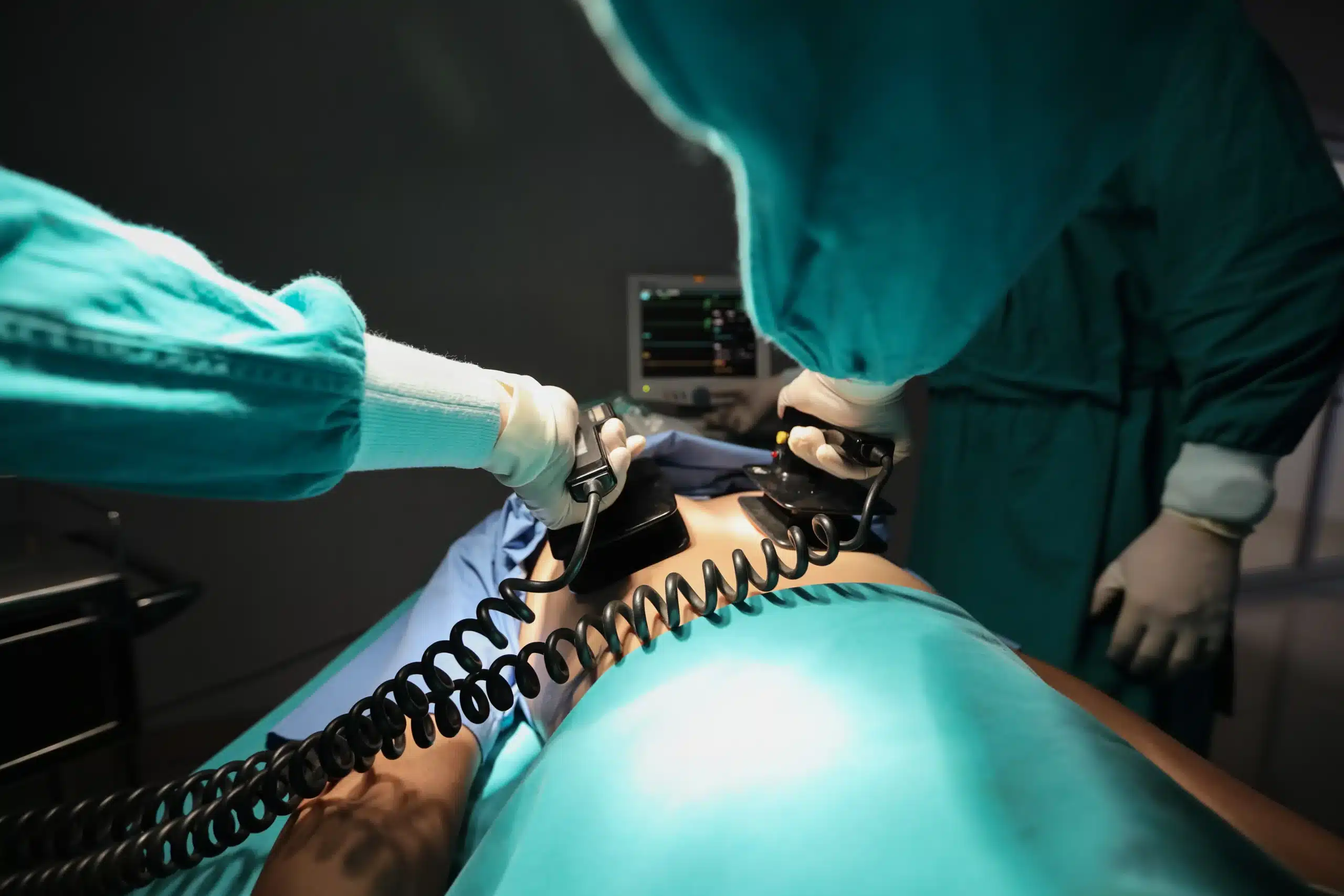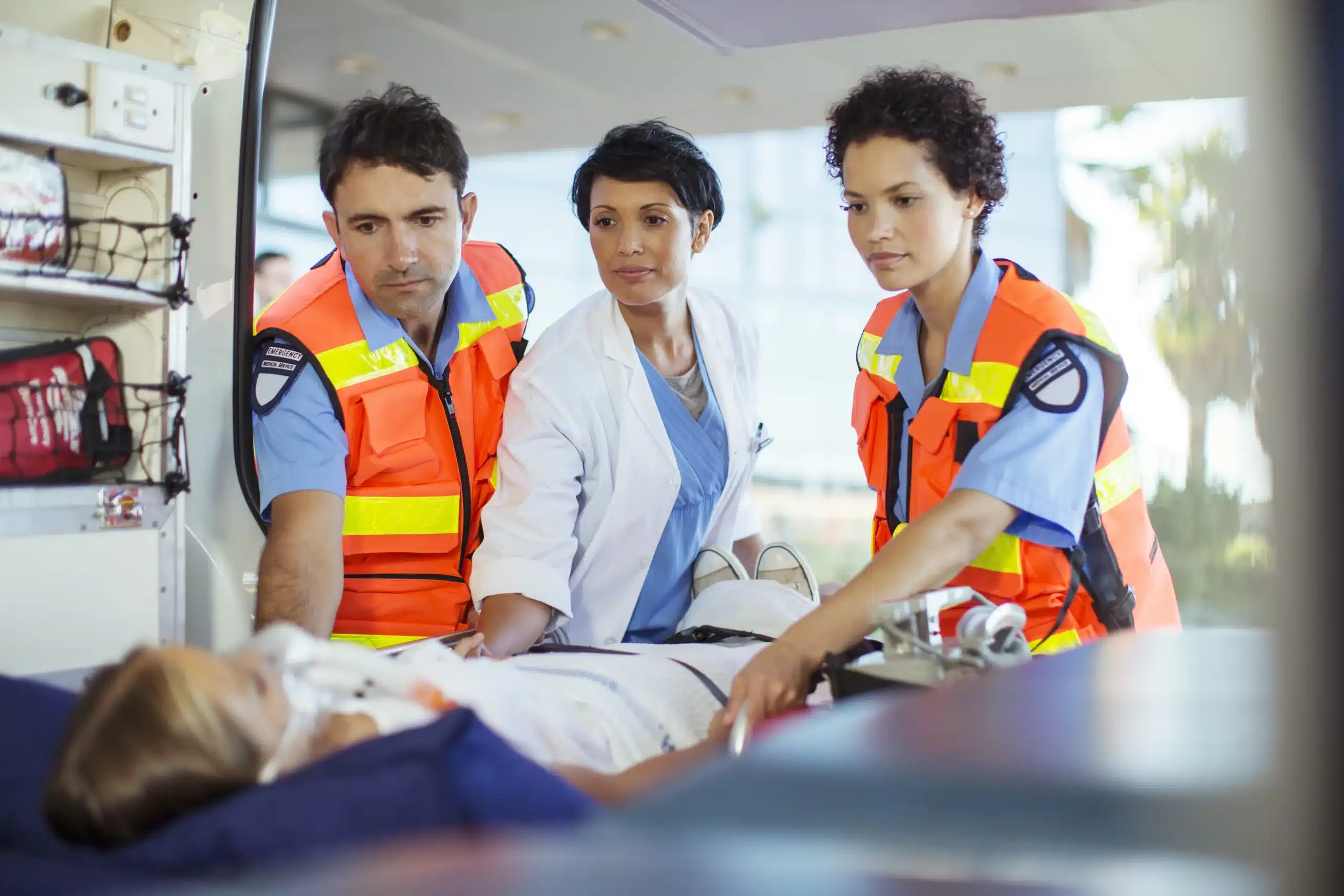Medical emergencies can happen anytime, anywhere. Are you prepared to respond? BLS certification gives you the tools and confidence to act quickly and effectively in critical situations. This comprehensive guide covers everything from the basics of BLS to finding the perfect course for your needs, including using search terms like “BLS certification near me.” We’ll discuss the various training formats, the costs involved, and the steps to get certified. We’ll also explore the broader benefits of BLS training and why staying current with your certification is so important.
Key Takeaways
- BLS certification equips you with essential life-saving skills: From CPR and AED use to airway management, you’ll gain the confidence to respond effectively in emergencies. Explore various course formats to find one that suits your needs.
- Finding the right BLS course provider is key: Look for reputable organizations offering AHA-accredited courses, experienced instructors, and comprehensive materials. Consider factors like cost, location, and schedule flexibility.
- Staying current with your BLS certification is vital: Renew your certification every two years and stay updated on the latest guidelines. Efficient renewal programs like RQI can help you maintain your skills and certification seamlessly.
What is BLS Certification & Why Do You Need It?
Basic Life Support (BLS) certification equips you with the skills to respond to life-threatening emergencies. It’s more than just CPR—it covers a range of interventions for adults, children, and infants. Think of it as your toolkit for helping someone experiencing cardiac arrest, choking, or a respiratory emergency. In those critical moments, your actions can save a life. BLS certification gives you the confidence and competence to act quickly and effectively.
BLS Training: What You’ll Learn
BLS certification courses cover essential life-saving techniques. You’ll learn how to perform high-quality CPR, including chest compressions and rescue breaths. The training also includes using automated external defibrillators (AEDs), which can restore a normal heart rhythm. You’ll also learn basic airway management techniques to help someone who is choking or having difficulty breathing. These skills are practiced in a safe environment so you feel prepared for a real emergency. Many courses, like those offered at Safety Training Seminars, follow American Heart Association guidelines, ensuring you receive up-to-date training.
Who Should Get BLS Certified?
While often associated with healthcare professionals, BLS certification is valuable for anyone. It’s frequently required for careers like firefighters, police officers, EMTs, paramedics, and nurses. Even if it’s not mandatory for your profession, BLS training can be a real asset. Childcare providers, teachers, coaches, or even parents—anyone who interacts with people regularly can benefit from these skills. Check out our CPR and First Aid Certification page for more information. Our discount group classes are a great option for workplaces or community groups in Livermore, Dublin, and Mountain House, CA.
BLS Certification: Debunking Common Myths
There are a few common misconceptions about BLS certification. One is that it’s only for doctors and nurses. Not true! It’s beneficial for a wide range of professions and individuals. Another myth is that online BLS certification isn’t as credible as in-person training. While in-person training offers hands-on practice, many reputable organizations offer online BLS certification that meets the same standards. Finally, some believe BLS certification is a one-time thing. Certifications typically expire after two years, requiring renewal. You can learn more about our renewal options, including the RQI program for quick certification, on our website. We also offer a low price guarantee, ensuring you get the best value for your training.
Find BLS Certification Courses Near You
Finding the right BLS certification course shouldn’t feel like searching for a needle in a haystack. With a little know-how, you can quickly locate convenient, high-quality training options. Here’s how:
Smart Search Strategies
Start your search online. Use specific keywords like “BLS certification near me” or “BLS classes in [your city]” to narrow down your options. The American Red Cross website often lists class schedules and locations, allowing you to filter by your area. You can also explore other national organizations like the American Heart Association to see what courses they offer in your region. Don’t forget to check with local hospitals, community colleges, and fire departments—many offer BLS training to the public.
Local & Online Training Options
BLS courses are available in several formats. In-person classes provide hands-on learning and direct interaction with instructors. Online BLS certification offers flexibility for those with busy schedules or limited access to in-person training. Blended learning programs combine online coursework with in-person skills sessions. Consider which format best suits your learning style and availability.
Safety Training Seminars in Livermore
If you’re in the Livermore, Dublin, or Mountain House area of California, Safety Training Seminars offers a range of American Heart Association courses, including BLS. They also provide specialized training like the EMSA Child Care Health & Safety program and offer discount group classes. For quick recertification, their RQI program might be a perfect fit. With a commitment to excellent customer service and competitive pricing, Safety Training Seminars is a convenient and affordable option for local residents. They even offer a low price guarantee.
Choose the Right BLS Training Format
Deciding on the best BLS training format depends on your learning style, schedule, and budget. Let’s break down the pros and cons of each option so you can make an informed choice.
In-Person Courses: Pros & Cons
In-person BLS training offers a hands-on learning experience ideal for those who thrive in interactive environments. You’ll practice skills like CPR and using an AED with certified instructors providing real-time feedback. This direct interaction builds confidence and allows you to ask questions as they arise. The American Red Cross is a well-known provider of in-person BLS certification courses. However, in-person classes require a fixed schedule and travel, which can be challenging.
Online Certification: Benefits & Limits
Online BLS courses offer flexibility, allowing you to learn at your own pace and from anywhere with an internet connection. This format is particularly helpful for those juggling work, family, or other commitments. Online BLS certification can be a convenient option for nurses and other healthcare professionals. However, online courses typically require self-discipline and may not provide the same level of hands-on practice as in-person training. While some programs offer virtual simulations, they may not fully replicate working with real equipment.
Blended Learning: A Balanced Approach
Blended learning combines online learning with in-person skills sessions. You’ll complete online coursework, including videos and interactive modules, then attend an in-person session to practice your skills and receive feedback. The Red Cross offers blended learning options for BLS certification. This format provides a balanced approach, catering to different learning styles and schedules while ensuring you get adequate hands-on practice.
How Much Does BLS Certification Cost?
So, you’re ready to get your BLS certification—fantastic! Now, let’s talk about the practical side: cost. Understanding the factors that influence pricing will help you budget effectively and find the best value.
Average Prices & What Affects Them
BLS certification costs typically range from $75 to $150. Several things can nudge the price up or down. In-person training tends to be more expensive than online courses because it includes classroom time, hands-on practice, and instructor feedback. Location matters too. Big cities often have higher overhead, which can affect course fees. Finally, the training provider itself plays a role. Some organizations, like Safety Training Seminars, prioritize affordability and offer competitive pricing. We even have a low price guarantee!
Discounts, Group Rates & Financial Aid
Looking to certify a whole team? Ask about group discounts! Many providers, including Safety Training Seminars, offer reduced rates for group bookings. This makes it more cost-effective to train multiple employees at once and can be a great option for businesses, schools, or community organizations. It’s also worth checking if financial aid or scholarships are available. Some programs offer assistance to students or individuals facing financial hardship.
Safety Training Seminars’ Low Price Guarantee
At Safety Training Seminars, we believe that high-quality BLS training shouldn’t break the bank. Our low price guarantee ensures that you receive excellent instruction and certification at a competitive price. We’re committed to making BLS training accessible to everyone in our community, including Livermore, Dublin, and Mountain House. Check out our CPR and First Aid Certification courses to learn more.
Get BLS Certified: Here’s How
Getting your BLS certification is straightforward. This section breaks down the process, from course components to what to expect during your skills assessment.
Course Length & Components
BLS certification courses are designed to be comprehensive, yet manageable. You can find courses in several formats—fully online, in-person, and blended learning (a mix of online and in-person)—to fit your schedule and learning style. Blended learning and in-person courses typically include hands-on training and skills practice, guided by experienced instructors. The curriculum covers essential life-saving techniques, including CPR, using an automated external defibrillator (AED), and relieving obstructed airways for adults, children, and infants. For more details on BLS training and certification, check out the American Red Cross. At Safety Training Seminars, we offer a variety of CPR and First Aid courses to meet your needs.
Exams & Skills Assessments
BLS certification involves both a written exam and a skills assessment. The written exam tests your knowledge of the BLS principles and procedures covered in the course. The skills assessment requires you to demonstrate your proficiency in performing CPR, using an AED, and relieving airway obstructions. You’ll practice these skills during the course, so you’ll feel prepared for the assessment. Successful completion of both components is required for certification, which is typically valid for two years.
Accreditation & Employer Recognition
Accreditation matters when choosing a BLS course. Look for courses accredited by reputable organizations like the American Heart Association (AHA). Accreditation by organizations like the American Dental Association (ADA), the American Medical Association (AMA), and the American Nurses Credentialing Center (ANCC) is often important for employer acceptance, as highlighted by ACLS.com. BLS certification is often a prerequisite for many jobs, especially in healthcare, but also in other fields like public safety and education. While the Red Cross notes that BLS certification is frequently required for professions like firefighters, police officers, EMTs, paramedics, and nurses, specific requirements can vary. Always check with your employer or licensing board to confirm the necessary credentials. Our low price guarantee ensures you’re getting the best value for your BLS certification.
Keep Your BLS Certification Current
Once you’ve earned your BLS certification, your work isn’t over. Staying current with your training is essential for providing effective, high-quality care. This section covers how to renew your BLS certification, why staying up-to-date on guidelines matters, and how the RQI program can help you quickly recertify.
Renewing Your Certification
BLS certification is typically valid for two years. Knowing when your certification expires is crucial, especially if it’s a job requirement. Many professions, including firefighters, police officers, EMTs, paramedics, nurses, and other healthcare providers, require valid BLS certification. Check with your employer or professional organization for specific requirements. The Red Cross offers refresher courses and resources to help you maintain your skills and renew your certification before it lapses. Plan and schedule your renewal in advance to avoid any gaps in your certification.
Staying Up-to-Date with Guidelines
The medical field is constantly evolving. Staying updated on the latest BLS guidelines ensures you’re using the most effective techniques in emergency situations. BLS curriculum typically aligns with the American Heart Association (AHA) guidelines and covers essential skills like CPR, AED use, and airway management for adults, children, and infants. Regularly reviewing updated guidelines and incorporating them into your practice is key to providing the best possible care. Resources like the AHA website and professional journals can help you stay informed about any changes.
RQI: Fast Certification
Need a quick and convenient way to renew your BLS certification? The Resuscitation Quality Improvement (RQI) program offers a blended learning approach that combines online learning with low-dose, high-frequency skills sessions. This flexible format allows you to complete the cognitive portion of the training online at your own pace. Then, you’ll practice your skills in person and demonstrate competency. RQI is designed to be more efficient and effective than traditional renewal courses, making it a popular choice for busy professionals. Safety Training Seminars offers RQI classes, providing a streamlined path to maintaining your BLS certification.
BLS Certification: Benefits Beyond Healthcare
While we often associate BLS certification with healthcare professionals, its value extends far beyond hospitals and clinics. Whether you’re a teacher, a construction worker, or a stay-at-home parent, BLS skills can make a real difference in various aspects of your life.
Improve Workplace Safety
Many professions benefit from having employees trained in BLS. BLS training equips people with the skills to respond effectively to emergencies, creating a safer work environment. From recognizing the signs of a heart attack to administering CPR and using an AED, BLS-trained employees can be invaluable first responders in critical situations. This is particularly important in workplaces with higher risks, such as construction sites, factories, and fitness centers. Having trained personnel on-site can significantly reduce response times, potentially saving lives.
Prepare for Personal Emergencies
Emergencies can happen anytime, and being prepared can make all the difference. BLS certification gives you the knowledge and skills to handle a range of medical crises, from choking incidents to cardiac arrests. Knowing how to perform CPR or use an AED on a loved one can be life-saving, especially in those crucial minutes before professional help arrives. These skills empower you to take control in a stressful situation and provide immediate assistance to those in need, whether at home, in public, or while traveling.
Advance Your Career
BLS certification can be a valuable asset to your resume, regardless of your industry. It demonstrates your commitment to safety and your willingness to take initiative. Earning your BLS certification can open doors to new job opportunities, particularly in fields like education, childcare, fitness, and security. Even if not explicitly required, BLS certification can give you a competitive edge, showcasing your preparedness and ability to handle critical situations. It signals to potential employers that you are a responsible and resourceful individual, qualities highly valued in any workplace.
Choose a Reputable BLS Provider
Finding the right BLS provider is just as important as the certification itself. Here’s what to look for to ensure you’re getting high-quality training that meets industry standards.
Accreditation & Recognition
First things first, confirm your chosen provider’s accreditation. A reputable BLS course should be accredited by a nationally recognized organization like the American Heart Association (AHA). This accreditation validates the course content and ensures it aligns with current resuscitation guidelines. Check if your workplace or governing body requires certification from a specific organization before enrolling. For example, many healthcare facilities prefer AHA-certified providers. Safety Training Seminars is proud to offer AHA-accredited courses, ensuring your certification is widely accepted. You can explore our course offerings on our CPR and First Aid Certification page.
Qualified Instructors & Materials
The effectiveness of your training depends heavily on the instructor’s expertise. Look for providers with experienced, certified instructors who can create a supportive learning environment. Ask about their teaching style and experience. Safety Training Seminars prioritizes experienced instructors dedicated to providing high-quality training. Equally important are the training materials. Up-to-date materials, whether online or in person, should cover the latest BLS techniques and procedures.
Customer Support & Flexibility
Finally, consider the provider’s customer support and the flexibility they offer. Things happen—schedules change, questions arise. A provider with responsive customer service can make your learning experience smoother. Contact us to experience our commitment to excellent customer service. Also, think about your learning style and schedule. Does the provider offer in-person classes or a blended learning format? Choosing a format that fits your needs will set you up for success. If you anticipate needing support or have a busy schedule, these factors are key to a positive and effective learning experience. We understand the demands of busy professionals and offer flexible scheduling options to accommodate your needs. Learn more about our group discounts for added convenience and cost savings.
BLS Certification Providers in Livermore
Finding the right BLS certification course can feel overwhelming, but it doesn’t have to be. Here’s a rundown of reputable providers in Livermore to help you get started.
Safety Training Seminars
Safety Training Seminars offers a range of American Heart Association courses, including BLS, ACLS, PALS, CPR, and First Aid. They also provide specialized training like the EMSA Child Care Health & Safety program and the innovative RQI program for quick recertification. Known for excellent customer service and competitive pricing, Safety Training Seminars provides certification cards valid for two years. Serving Dublin, Livermore, and Mountain House, they offer discount group classes and a low price guarantee.
American Heart Association
The American Heart Association (AHA) is a leading provider of BLS training. Their BLS Instructor-led course teaches both single-rescuer and team basic life support skills, focusing on high-quality CPR and team dynamics. This course prepares you for prehospital and in-facility emergencies. The AHA offers various course formats, including in-person and blended learning options. They also publish the latest guidelines for CPR and emergency cardiovascular care, ensuring their training remains current and evidence-based.
American Red Cross
The American Red Cross is another well-respected option for BLS certification. They offer a blended learning approach, combining online coursework with in-person skills sessions. This flexible format allows you to learn at your own pace and complete the in-person portion when it’s convenient. The Red Cross has training locations across the country, making it easy to find a class near you. Their courses are designed to meet the needs of healthcare providers and other professionals who require BLS certification.
Local Hospitals & Medical Centers
Many local hospitals and medical centers in Livermore also offer BLS certification courses. Check with facilities like Stanford Health Care – ValleyCare and Kaiser Permanente to see what programs they have available. These courses are often geared toward healthcare professionals and may offer continuing education credits. Be sure to inquire about recertification requirements and any potential challenges healthcare professionals face when renewing their BLS certification.
Prepare for Your BLS Course
Getting ready for your BLS course can make a big difference in how well you absorb the information and perform on the skills tests. A little prep work goes a long way! Here’s how to get prepared:
Study Materials & Resources
The American Red Cross and the American Heart Association (AHA) offer comprehensive study materials for BLS courses. These resources typically include manuals, videos, and online practice tests covering CPR, AED use, and airway management for adults, children, and infants. The American Red Cross website has more information on BLS training and resources. Many courses, like those offered at Safety Training Seminars, align with AHA guidelines, ensuring you receive high-quality instruction. Learn more on our CPR and First Aid Certification page.
Ace the Written Exam
BLS courses usually involve a written exam to assess your understanding of the material. Review the course materials thoroughly, focusing on key concepts and procedures. Take advantage of practice tests and quizzes to identify areas where you might need extra review. Don’t hesitate to ask your instructor for clarification on anything you’re unsure about. The Red Cross also offers refresher courses to help maintain your skills and knowledge.
Practice Your Skills
BLS certification isn’t just about knowing the theory; it’s about performing life-saving skills effectively. Hands-on practice is essential. Many programs use a blended learning approach, combining online learning with in-person skills sessions. This allows you to learn at your own pace online and then refine your technique with an instructor. The Red Cross offers this blended learning format for some of their courses. Take every opportunity to practice CPR compressions, AED use, and other skills during the course. The more you practice, the more confident and prepared you’ll feel in a real-life emergency.
Related Articles
- BLS Classes in Dublin: Your Complete Guide – Livermore CPR Classes
- BLS Training Near Me: Find the Right Course – Livermore CPR Classes
- BLS Certification in Mountain House: Your Guide – Livermore CPR Classes
- Essential Guide to BLS Courses in Mountain House – Livermore CPR Classes
- Find BLS Classes Near Me: Your Complete Guide – Livermore CPR Classes
Frequently Asked Questions
Is BLS certification only for healthcare professionals? Not at all! While it’s definitely a requirement for many healthcare careers, BLS certification is a valuable skill for anyone to have. Teachers, coaches, parents, and anyone who interacts with people regularly can benefit from knowing how to respond to emergencies.
What’s the difference between online and in-person BLS certification? Both online and in-person BLS courses cover the same core material and lead to a valid certification. In-person classes offer hands-on practice with instructors, while online courses provide more flexibility for those with busy schedules. Consider your learning style and availability when choosing a format.
How much does BLS certification cost, and are there any discounts? BLS certification costs vary but typically range from $75 to $150. Factors like location and the training provider can influence the price. Many providers offer discounts for group registrations, so be sure to ask if you’re training with friends, family, or colleagues. Safety Training Seminars, for example, offers group discounts and a low price guarantee.
How long is BLS certification valid, and how do I renew it? BLS certification is generally valid for two years. Renewal involves completing a refresher course and demonstrating your skills. The RQI program is a popular option for quick and convenient recertification. It’s a good idea to mark your calendar and plan your renewal in advance to avoid any lapse in your certification.
What if I have more questions about BLS certification? If you have additional questions or need help finding a BLS course near you, reach out to a local training provider like Safety Training Seminars. They can provide personalized guidance and help you choose the right course to meet your needs. You can also explore resources like the American Heart Association and the American Red Cross websites for more information.

